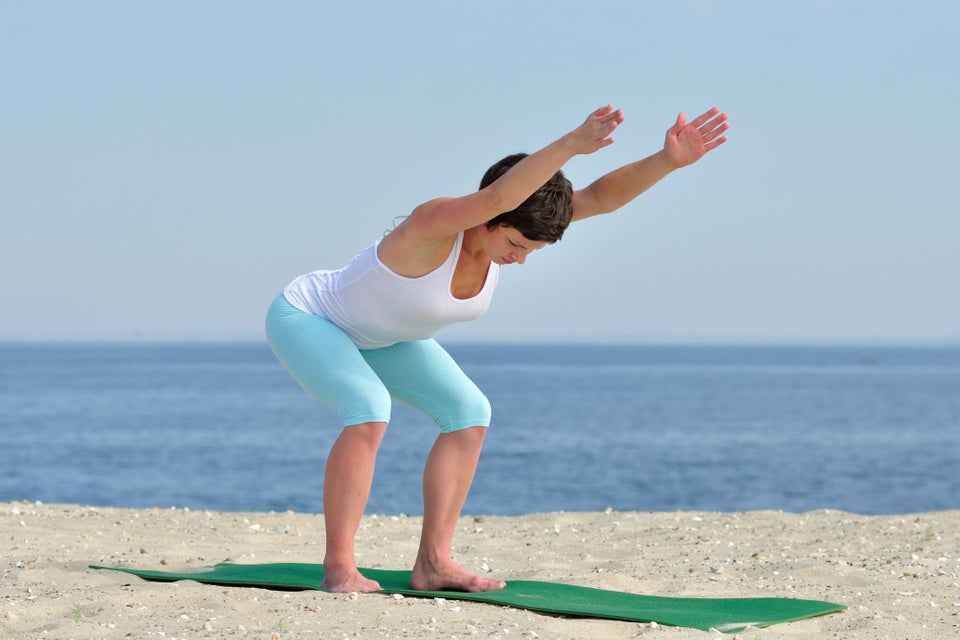Ever noticed that the waist you used to have has been replaced with a thicker middle? Or that you seem to be shrinking? It's not your imagination. Read on to find out what's going on.
1. Obesity/Overeating
"A lot of factors contribute to our body shape changing, and the first one is overeating," says Donnica Moore, M.D.,president of theSapphire Women's Health Group. "More than half of adult Americans are overweight and a third are obese. Many of us are starting out behind the eight ball before we even factor in other changes."
The average American man eats 2,638 calories a day and the average American woman eats 1,785 calories a day, according to the National Health and Nutrition Examination Survey conducted by the Centers for Disease Control. That's far more than the recommended 2,000 calories for adult men, and 1,600 calories for adult women.
"After the age of 40, a whole host of factors contribute to overeating," says Pamela Peeke, M.D., author of Fight Fat After Forty. "This includes business-related travel and meals, higher levels of stress and stress-related eating, more celebratory social dinners, and more alcohol use."
What can you do? Start with small changes like adding more fruits and vegetables to your diet while cutting out sugary, fatty snacks. You can also cut down on how much alcohol you drink. "Cut out diet soda," says Dr. Moore. People have the mistaken belief that you won't gain weight with diet soda, she says, however, diet soda is loaded with artificial sweeteners, which have been shown to cause food cravings.
2. Hormones
As men and women age, sex hormones decline, which can wreak havoc on your body. "Throughout a man’s life, excess fat will be stored in the belly region because men are born with more fat cells there than women," says Dr. Peeke. "Women have more fat cells in the hips, thighs and buttocks, and when they gain excess fat prior to age 40, it’s usually in those areas." But as menopause approaches, estrogen, progesterone and testosterone gradually decline for women. That means fat in women's bodies begins to deposit around the belly and inside the belly. Dr. Moore calls this the thickening of the belly area the "meno-pot."
For men, declining testosterone levels also make it much easier to redistribute fat to the belly. Whether for men or women, the problem with belly fat is more than cosmetic. "It can can greatly increase the risk for diabetes, cardiovasular disease like heart attacks, and even lifespan," says Dr. Moore. "Women with waistlines of more than 35 inches are believed to be twice as like to die of heart disease and cancer than women whose waistlines are under 28 inches," says Dr. Moore citing the Nurses Health Studyconducted by Harvard University.
3. Lack of exercise
"The reality is, we become more sedentary as we age, which means we're eating more and burning less," says Dr. Moore. The reasons for slowing down can range from having a disability or medical condition, to retiring from work and not being as active. The problem is that being more sedentary means having less muscle mass, and muscle mass is responsible for effective calorie burning.
"Muscle mass decreases significantly if you don't do any strength training," says Dr. Peeke. "This is a major reason why food is not more effectively metabolized as men and women age." She suggests doing a combination of physical activities several times a week which include both aerobic activities (like walking) and strength training (like lifting weights or using resistance bands)."
The Mayo Clinic recommends doing about 30 minutes of moderate aerobic exercise a day and weight training twice a week, but points out that if you're trying to burn fat, you'll need to increase those amounts. "Start slowly, even doing five or ten minutes a day and gradually building up," says Dr. Moore. Always talk to your doctor beforehand to help you plan your fitness regimen and find out what types of exercises are right for you.
4. Gravity
"Gravity is not your friend," says Dr. Moore. As we age, our bodies naturally begin to sag in places. Breasts often drop and "your belly can pull down if you're overweight," Dr. Moore says. The best thing to do to help minimize a sagging belly: Watch your weight and exercise.
5. Loss of height
Did you ever notice that people tend to look shorter as they get older? It's not an optical illusion. Osteoporosis can cause rounding in the spine and shoulders, which is why getting enough calcium is important. Also, men and women both lose height with age. "Women lose height dramatically in the first five years after menopause," says Dr. Moore. "In general they can lose about one to three inches over their lifetime, and men can lose one to two inches. And, points out Dr. Moore, loss of height accelerates after age 70.
Another reason you might look shorter: Your posture can become worse and you begin to slump. To get yourself standing straighter, try these simple exercises or do yoga, which can help.
Read more from Grandparents.com:
7 reasons to start your day with lemon water
7 tips to save money when outlet shopping
Also on The Huffington Post

